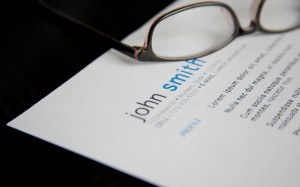Revisiting the Resume with Ketchum’s Talent Acquisition Manager
When I started to build a list of what employers really want to see (and not see) in a resume, I expected the answers to be the same. After a chat with resume expert and Ketchum’s Talent Acquisition Manager Serena Cohen about what she looks for in a resume, I quickly learned that writing and organizing a resume is, like public relations, both an art and a science.
Cohen says that traditional resumes are not a bad thing, but don’t shy away from more creative designs, either. “Having print resumes for different companies is very important. [If you’re applying for a] more creative industry, you can get a little more creative with the design of your resume, but that’s really dependent on the company.”
For public relations professionals, several factors should influence resume design including agency or corporate environments, as well as the specific job for which you’re applying. If you’re applying for a creative position and choose the creative design option, make sure your graphic design accentuates all the great work you have in your portfolio.
“I would use color and design if you’re good at that stuff — if you have a visual eye. Don’t try it if you’re not an artsy, visual person because what happens is that you try but the execution doesn’t look visually appealing. There are lots of templates you can use.”
Keep it consistent with your personal brand.
In line with the creative design route, your resume’s colors, fonts, language and design aesthetic should be consistent with your other application materials. “Resumes are just one piece of your personal brand. Have your LinkedIn page completely updated with a smiling, front-facing picture, use keywords that are likely to come up in searches and have a personal website for people to read things you’ve written. Maybe have your resume the same colors as your website,” Cohen said.
She also recommends you look at your social platforms as part of a holistic approach to personal branding. “Think about your whole personal brand: Does it have your Twitter [handle] on it? Do you have 5,000 followers? Are you a blogger on the side? Include those links because they’re things that a public relations professional will be looking at.”
Organize it effectively.
Be careful to not get caught up in the design and bury the information recruiters most want to learn. When looking for an internship or full-time employment as a student, highlight your education and relevant work experience.
“I love it when you put your education first,” Cohen said. “I think education is the highlight of everything right now. Experience, like PRSSA, is great to put up at the top too. PRSSA is a well-known, well-respected organization.”
Use strong, persuasive language.
As public relations professionals, it is imperative you are able to communicate effectively on behalf of your future employer, so your application materials are the first test to see whether you can communicate effectively.
“I think what ‘makes’ a resume is simple, sophisticated, visually appealing and the right language to frame what you’re offering. You don’t want to use ‘really strong at multitasking.’ What does that even mean? I would rather hear ‘wrote 25 press releases’ or ‘had a feature in New York Magazine,’” Cohen said. “I want to hear stuff like that; there’s more action.”
From traditional to creative design, all resumes should be filled with action words, able to capture your brand and sell your services to your dream employer. “I want to see you have what it takes to do the job you’re applying for,” Cohen said. “Sometimes people apply for jobs they’re not really qualified for, but if you can articulate why you think you’re skilled, that goes a really long way.”
What parts of Cohen’s advice did you find most helpful? Which did you find most surprising? Let us know in the comments below, and don’t forget to keep the Internship Center and Career Resources Manual in mind as you start your internship search.
—
Veronica Mingrone is the 2015–2016 vice president of career services, and a senior at the University of Florida. Follow her on Twitter @veronica_min.

